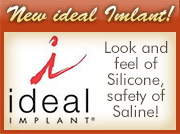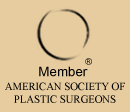Prevention of Capsular Contracture in Seattle
Also serving Bellevue, Kirkland, & Everett
- Prevention of Breast Implant Bacterial Contamination: Low grade implant infection has been implicated as the most likely cause of a large portion of capsular contractures that occur following breast augmentation. At Pratt Plastic Surgery, the breast augmentation procedure is always performed in the main Medicare certified and accredited operating room under the strictest sterile precautions. The operating theater features a special HVAC system that purifies all incoming air as it passes through an ultrafine HEPA filter, which eliminates the tiniest of dust particles from entering the OR. A pressure gradient between the OR and surrounding rooms prevents air from entering retrograde through the entry doors when opened. All patients receive preoperative antibiotics thru the IV prior to the incision as is recommended by the AORN and JCAHO. Absolute Sterile Technique is strictly adhered to, with all staff wearing sterile gowns and gloves, surgical masks and head and shoe coverings. The patient is prepped with Hibiclens, the No. 1 recommended prepping solution available, and then draped with sterile towels and drapes that prevent contamination of the surgical site by the patient or anesthesia provider. Dr. Pratt and the certified scrub technician “double glove” (wear an extra pair of gloves) in order to prevent contamination of the patient, in case a hole develops in one of the outer gloves. Sterile instruments and an electric blade are used for the dissection of the pocket. The surgical pockets are then treated with an iodine-povidone antiseptic solution and irrigated with “Triple Antibiotic Solution” containing the hospital grade antibiotics, Gentamicin, Bacitracin and Cephazolin. Following creation of the implant pocket, Dr. Pratt dons new sterile gloves, and the implant is never handled by anyone other than Dr. Pratt. The doctor prepares the implant by immediately placing it into sterile “Triple Antibiotic Solution.” The skin around the incision is then re-sterilized with Hibiclens solution. The “Mladick No Touch” Technique is used for handling of the implant, which is removed from the antibiotic solution, rolled up and placed though the incision without touching the patient’s skin, drapes or instruments. The pocket has previously been filled with antibiotic solution. The implant is then filled using a “Closed Filling System”, where a sterile IV bag of saline solution is used to fill the saline implant; it is connected via sterile tubing to the filler tube of the implant, thus preventing any contamination from entering the implant. The pocket is then closed immediately with three layers of stitches and the incision is sealed with Steri-strips and covered with a sterile gauze dressing.
Prevention of inner and outer implant contamination by foreign bodies, bacteria or fungus is a top priority during breast augmentation surgery at Pratt Plastic Surgery, thus helping prevent acute implant infection and the low-grade bacterial contamination thought to be a possible cause of capsular contracture of breast implants.
- Prevention of Bleeding: Blood deposited around a breast implant can lead to a severe capsular contracture. Thus, Dr. Pratt is very fastidious in controlling all bleeding with the electrocautery, and he double-checks to make sure there is no bleeding inside of the pocket prior to placement of the implant. If prior to closing the incision there is any signs of bleeding, Dr. Pratt will stop it in order to prevent a Hematoma and subsequent capsular formation.
- Avoid Powdered Gloves: Powder from the surgeon’s gloves has been implicated as being a possible cause of capsular contracture. Dr. Pratt only uses powder-free gloves during breast augmentation.
- Use of IDEAL Breast Implants, since IDEAL Implants are known to have a reduced capsular contracture rate than other implants.
- Silicone implants are associated with a higher capsular contracture rate than saline. Dr. Pratt evaluates each patient on an individual basis and will recommend either IDEAL, saline or silicone breast implants on a case by case basis after interviewing and examining the patient.
- Submuscular placement of implants traditionally has been said to be associated with a higher capsular contracture rate than subglandular placement of implants. Dr. Pratt performs most breast augmentation under the muscle based on the patient’s particular anatomy. He also performs subglandular placement of the implants in many patients who have adequate soft tissue coverage of the implant and has seen no significant difference in capsular contracture rates.
Treatment of Capsular Contracture
- Mild to moderate contracture
- Proper technique
- Adequate frequency
- Adequate duration
Anti-inflammatory Medicine
- Accolate (brand name for the drug Zafirlukast) or Singulair (montelukast)
- Anti-inflammatory medicine used to decrease snoring and improve breathing in the treatment of chronic rhinitis and asthma
- Blocks the actions of leukotrienes in producing allergic and inflammatory reactions
- Effective in dramatically softening the scar tissue of capsular contractures in up to 50 percent of patients treated
- Decreases recurrence of capsular contracture following capsulectomy
- Dose: 20mg twice daily for three months for treatment of CC or two weeks prior to surgical treatment of CC
- Use is “Off Label” (not approved by the FDA for treatment of CC)
Antibiotics Dr. Pratt gives antibiotics before the incision and prescribes a week of antibiotics following all breast implant surgery. During capsulotomy or capsulectomy for the treatment of an established capsular contracture, a portion of the capsule is sent to the lab, and if cultures are positive for particular bacteria, Dr. Pratt will often place the patient on a longer course of the antibiotic which has been shown to be effective in treating that bacteria strain.
Vitamin E/Compression Garments/External Ultrasound are treatments that have not been proven effective in treating capsular contracture, but warrant further investigation.
Surgery is reserved for patients with mild to moderate capsular contracture refractory to the above measures, or severe contractures which are not effectively treated by non-surgical means.
Capsulectomy: complete removal of the capsule is usually reserved for cases of severe or calcified capsules and those which are contaminated with silicone particles, usually following a long-standing rupture.
Pocket revision: severe capsular contractures often result in contraction of the pocket size and shape. Also, it is not unusual to change the size or style of implant during surgery for capsular contracture. In these cases, the pocket will require modification to accommodate the implant being inserted.
Implant removal: in cases where the patient has decided to forgo having implants, simple removal can be done, often under local anesthesia with placement of a temporary drain which will prevent a fluid collection from occurring.
Implant removal and breast lift: in some patients, removal of the breast implants will result in droopy breasts that will require a breast lift to obtain optimal esthetics.
Overall, surgical treatment has been 97 percent successful, with the vast majority of patients resulting in soft, supple and natural appearing and feeling breasts.






